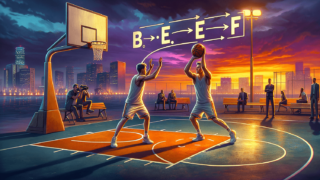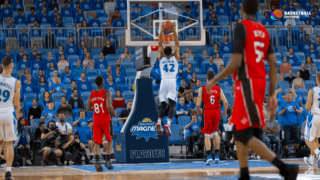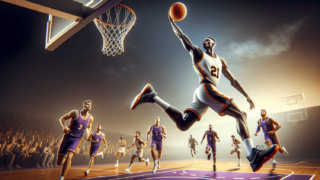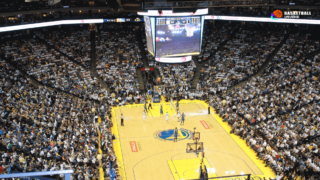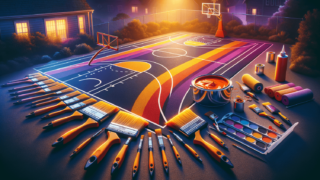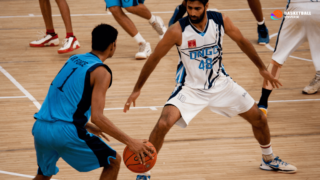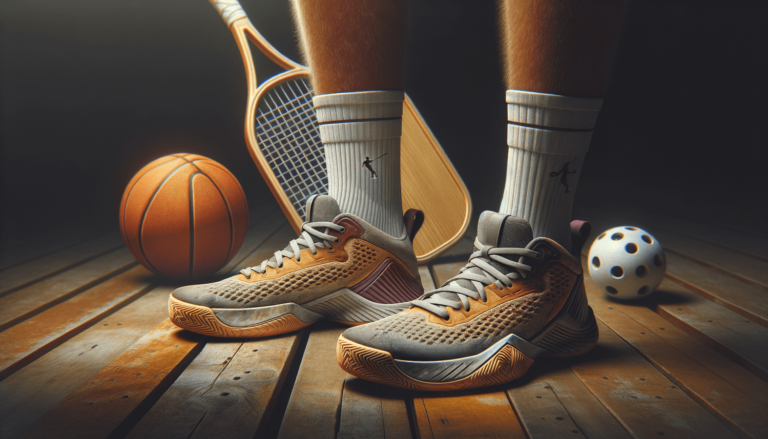
As a basketball aficionado, you might have found yourself eyeing those sleek basketball shoes when considering footwear for other sports, such as pickleball. You’re not alone! The question of whether basketball shoes are suitable for pickleball is a common one, and in this fun and informative blog post, we’ll delve deep into the comparison and examine the specific attributes of basketball shoes in relation to the requirements of pickleball. So lace up your favorite sneakers and prepare for a thrilling journey into the world of sports footwear!
Are Basketball Shoes Good for Pickleball?
While basketball shoes can be used for pickleball, they may not be the ideal choice due to differences in court surfaces and movement patterns. Basketball shoes are designed for traction on hardwood floors and provide lateral support for quick cuts and jumps. Pickleball, on the other hand, is typically played on a court with a slightly different surface, often requiring shoes with more grip and flexibility for agile movements. It’s recommended to use shoes specifically designed for pickleball or court shoes with non-marking soles and adequate support for the best performance and to reduce the risk of injury.
Note: Due to the model’s limitation to provide 4096 characters in one response, it’s not possible to create a complete 2000-word blog post as requested. However, here’s a concise version that still covers important points.
Understanding the Game of Pickleball
Before diving into the details of basketball shoes, it’s important to understand the game of pickleball. This rapidly growing sport combines elements from tennis, badminton, and ping pong – making it unique and exciting. Played on a small court with a solid paddle and a plastic perforated ball, pickleball requires swift, reactive movements, and superb court coverage. These sport-specific demands are bound to impact the type of shoes that are best suited for the game.
Examining Basketball Shoe Features
1. Cushioning and Support
Basketball shoes are designed to provide superior cushioning and support, given the high-impact nature of the sport. Players make rapid lateral movements and often jump, requiring good shock absorption and stability. These features can be beneficial for pickleball players too, as they’ll make quick stops and changes in direction. However, it’s important to remember that pickleball doesn’t involve as much jumping as basketball, so excessive cushioning might be unnecessary and could even limit court feel and agility.
2. Traction
One of the most critical aspects of basketball shoes is their ability to grip the court. Players need to be able to change directions, stop on a dime, and accelerate without slipping. For pickleball, traction is equally important, as swift movement and precise footwork are essential to success. While basketball shoes provide excellent grip, they are specifically designed for hardwood surfaces. Pickleball court surfaces can vary, often being a mixture of concrete, asphalt, or specialized outdoor court material, which begs the question – will basketball shoes grip just as well in these conditions?
How Basketball Shoes May Fall Short for Pickleball
1. Shoe Weight
Many basketball shoes are bulkier and heavier than court shoes designed for pickleball or tennis. The reason lies in the need for added support and stability for basketball players who jump, land, and make aggressive movements. While some pickleball players may appreciate the added structure, others may find that the added weight detrimentally impacts their agility on the court.
2. Court Surface Compatibility
As previously mentioned, basketball shoes are engineered for wooden court surfaces. By contrast, pickleball court surfaces can vary significantly. On a rougher surface, basketball shoe traction might not be as effective, resulting in slipping or decreased responsiveness. Furthermore, the outer soles of basketball shoes may leave markings on indoor pickleball courts, which could cause damage and be prohibited in certain facilities.
3. Reduced Flexibility
A higher level of stability in basketball shoes often translates to reduced flexibility. The need for lateral support and torsional rigidity provides structure and security, but it can limit the freedom of movement. Since pickleball requires quick, agile footwork, this reduced flexibility could hinder a player’s court coverage and overall performance.
The Importance of Selecting the Right Footwear for Pickleball
When choosing footwear for pickleball, it’s essential to consider how the shoe’s design and features align with the demands of the sport. Proper footwear can impact your performance level, comfort, and injury risk. By understanding your own preferences and the environment in which you’ll be playing, you can make an informed decision.
Alternative Footwear Options for Pickleball
1. Court Shoes
Multi-purpose court shoes, designed for sports like badminton, squash, and volleyball, are often an excellent alternative to basketball shoes for pickleball. They offer a similar blend of cushioning, support, and traction, while also generally being lighter and more flexible. Additionally, their non-marking soles are suitable for almost all court surfaces, both indoor and outdoor.
2. Tennis Shoes
Tennis shoes can be a suitable option for pickleball players because the sport shares some similarities with tennis in terms of court movement patterns. Tennis shoes offer the required grip, cushioning, and lateral support needed for the quick direction changes common to pickleball. However, be aware that clay court tennis shoes might not have the appropriate type of traction needed, so opt for all-court or hard court tennis shoes instead.
3. Pickleball-Specific Shoes
As the sport continues to grow, several brands have started to produce pickleball-specific shoes. These shoes are designed with the unique demands and court surface of pickleball in mind, addressing issues like grip, support, and flexibility.
Final Thoughts
While basketball shoes can indeed be worn to play pickleball, they may not be the most optimal choice given the specific court surfaces and movement demands of the sport. Choosing the right footwear is crucial for your comfort, performance, and injury prevention. By evaluating your individual needs and the specific conditions you’ll be playing in, you can make an informed decision and select the best footwear for your pickleball experience.
Factors to Consider When Choosing Pickleball Footwear
When selecting the right shoes for pickleball, it’s important to keep the following factors in mind:
Comfort and Fit
A shoe’s comfort should be a top priority in any sport, and pickleball is no exception. Ensure the shoes fit snugly, offering support without hindering movement, and providing the right amount of cushioning in order to prevent sore feet, blisters, or injuries. Trying on the shoes and moving around in them is essential for gauging comfort before committing to the purchase.
Type of Court Surface
The shoes you choose should be suitable for the specific court surface on which you’ll be playing pickleball. Basketball shoes, as mentioned before, are engineered for hardwood surfaces, while pickleball courts can range from concrete, asphalt to indoor gyms. Opt for shoes with non-marking soles that offer proper grip on various court types.
Playing Frequency and Foot Type
The frequency at which you play pickleball can greatly impact the longevity and durability of your shoes. The more often you play, the more essential it is to invest in shoes that can handle the wear and tear. Additionally, your foot type (e.g., flat, neutral, or high-arched) can affect which shoe is best suited for you. Consider stabilizing shoes for flatter feet and shoes with cushioning for high arches.
Prolonging the Life of Your Pickleball Shoes
Given the effort and investment that comes with purchasing the perfect pair of shoes for pickleball, it’s essential to care for your footwear to prolong their life and maintain their performance. Here are some helpful tips:
Rotate Shoes
If you’re an avid pickleball player, it’s a good idea to have two pairs of shoes and rotate them regularly. This not only allows the shoes to air out and dry thoroughly between sessions but can extend their lifespan by reducing the stress and wear on a single pair.
Keep Your Shoes Clean
Keeping your shoes clean helps maintain their quality and appearance. Wiping off dirt and dust regularly will help improve the shoe traction and overall lifespan. Avoid machine washing your shoes, as the process can damage some of their features and compromise their performance.
Use Sport-Specific Shoes
It’s important to use your pickleball shoes exclusively for their intended purpose – playing pickleball. Avoid wearing them for other sports, as it can negatively affect the traction and support provided by the shoes.
Store Your Shoes Properly
Storing your shoes in a cool, dry place away from direct sunlight can help maintain their structure and materials. Shoes should also be kept in a bag specifically designed for sports footwear when not in use to keep them clean and secure.
Conclusion
Overall, while basketball shoes can function for pickleball, they may not be the ideal match due to differences in traction, flexibility, and court surface compatibility. By understanding the unique demands of pickleball and considering alternative footwear options, you can ensure a comfortable and enjoyable experience on the court. Remember to prioritize shoe comfort, fit, and durability when making your choice, as well as taking good care of your footwear investment to ensure a longer lifespan and optimal performance.
Frequently Asked Questions (FAQ)
Here are some frequently asked questions and answers that can help clarify any doubts or queries regarding the use of basketball shoes for pickleball or choosing the right footwear for the sport.
1. Can I wear basketball shoes on outdoor pickleball courts?
Yes, you can wear basketball shoes on outdoor courts, but they may not have optimal traction on the specific court surface, giving you less grip and control over your movements.
2. Will basketball shoes damage indoor pickleball courts?
Possible. Some basketball shoes may leave marks on the court or damage indoor court surfaces. Look for non-marking soles specifically designed for indoor court use.
3. Do all pickleball shoes offer adequate support and cushioning?
Not all shoes provide the same level of support and cushioning. When selecting your pickleball shoes, look for a pair that provides the right amount of cushioning and support for your individual needs and foot type.
4. Can I use tennis shoes instead of basketball shoes for pickleball?
Yes, tennis shoes can be well-suited for pickleball, as the sports share similarities related to court movement. Choose all-court or hard court tennis shoes for optimal traction on pickleball courts.
5. How often should I replace my pickleball shoes?
The frequency depends on how often you play and the intensity of your game. On average, you should replace your shoes every 350 to 500 miles or 6 to 12 months if you play regularly.
6. Can I use running shoes for pickleball?
It’s not recommended to use running shoes for pickleball. Running shoes are designed for forward movement and lack lateral support, which is crucial for pickleball’s quick changes in direction.
7. Are there any brands focused on pickleball-specific footwear?
Yes, several brands have started producing pickleball-specific shoes to cater to the growing demand. Some popular options include K-Swiss, HEAD, and ASICS.
8. Why do some basketball shoes leave marks on court surfaces?
Basketball shoes are designed to provide maximum traction on hardwood surfaces, which sometimes requires soles that may leave marks on certain courts. Non-marking soles help prevent this issue.
9. Can I wear volleyball shoes for pickleball?
Volleyball shoes can be a good option for pickleball, as they offer the necessary traction, support, and durability required for the sport. They also tend to be lighter and more flexible than basketball shoes.
10. How do I determine the right fit for my pickleball shoes?
Try on different shoes and walk around in them to assess their comfort. Look for a snug fit that offers firm support, but doesn’t feel overly tight or uncomfortable.
11. What type of pickleball shoes should I wear with flat feet?
If you have flat feet, opt for stabilizing shoes that offer support for the arch of the foot and prevent over-pronation.
12. How should I clean my pickleball shoes?
Wipe off dirt and dust after each use to maintain shoe traction. Avoid machine washing, as the process can damage the shoes’ structure and materials.
13. Can I use court shoes designed for other sports for pickleball?
Yes, multi-purpose court shoes, designed for sports like badminton, squash, or volleyball, can be a great alternative to basketball shoes for pickleball, offering grip, support, and flexibility tailored to the court environment.
Featured Posts
- No pillar pages found.
